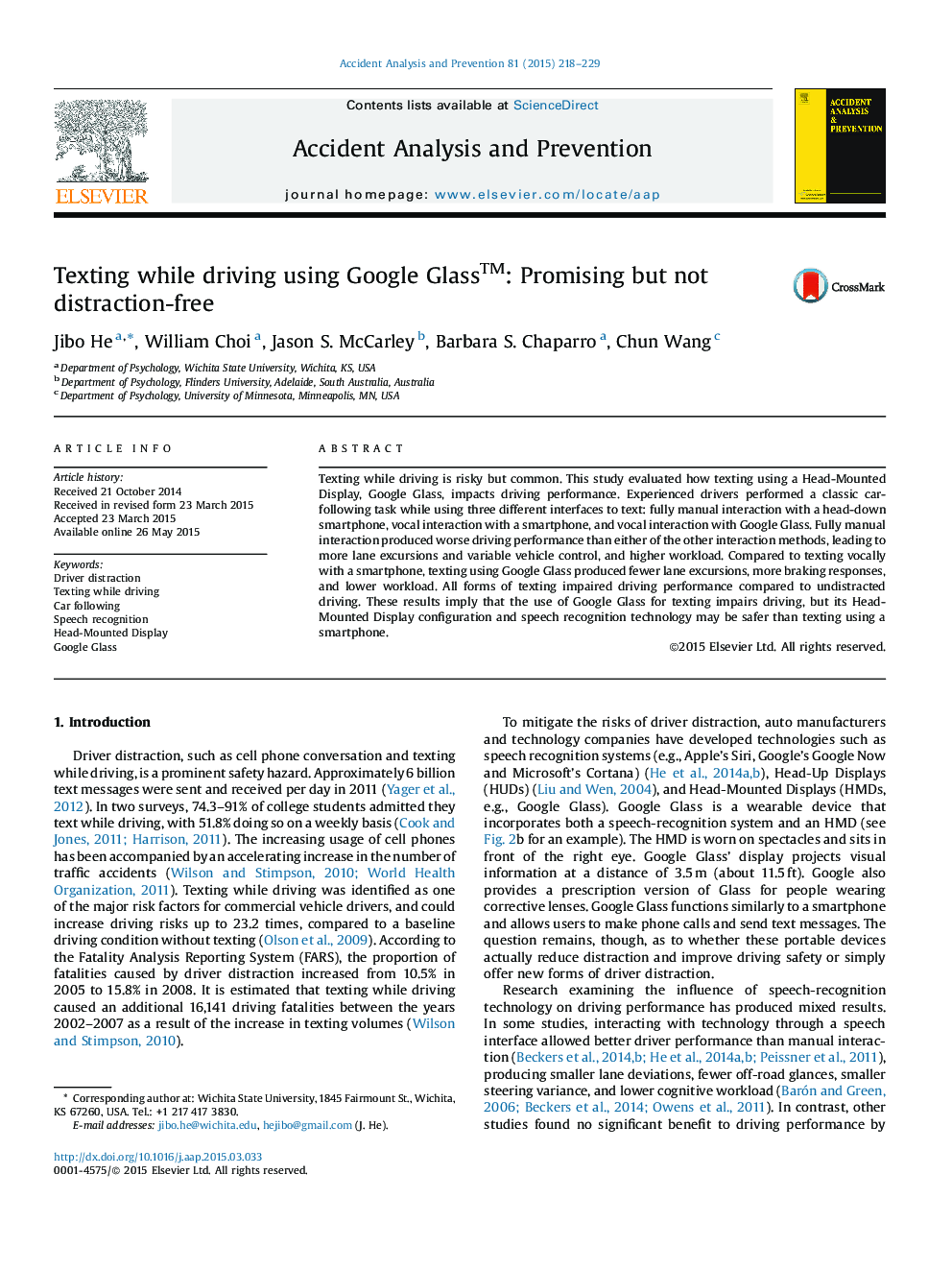| Article ID | Journal | Published Year | Pages | File Type |
|---|---|---|---|---|
| 6965603 | Accident Analysis & Prevention | 2015 | 12 Pages |
Abstract
Texting while driving is risky but common. This study evaluated how texting using a Head-Mounted Display, Google Glass, impacts driving performance. Experienced drivers performed a classic car-following task while using three different interfaces to text: fully manual interaction with a head-down smartphone, vocal interaction with a smartphone, and vocal interaction with Google Glass. Fully manual interaction produced worse driving performance than either of the other interaction methods, leading to more lane excursions and variable vehicle control, and higher workload. Compared to texting vocally with a smartphone, texting using Google Glass produced fewer lane excursions, more braking responses, and lower workload. All forms of texting impaired driving performance compared to undistracted driving. These results imply that the use of Google Glass for texting impairs driving, but its Head-Mounted Display configuration and speech recognition technology may be safer than texting using a smartphone.
Keywords
Related Topics
Physical Sciences and Engineering
Chemical Engineering
Chemical Health and Safety
Authors
Jibo He, William Choi, Jason S. McCarley, Barbara S. Chaparro, Chun Wang,
